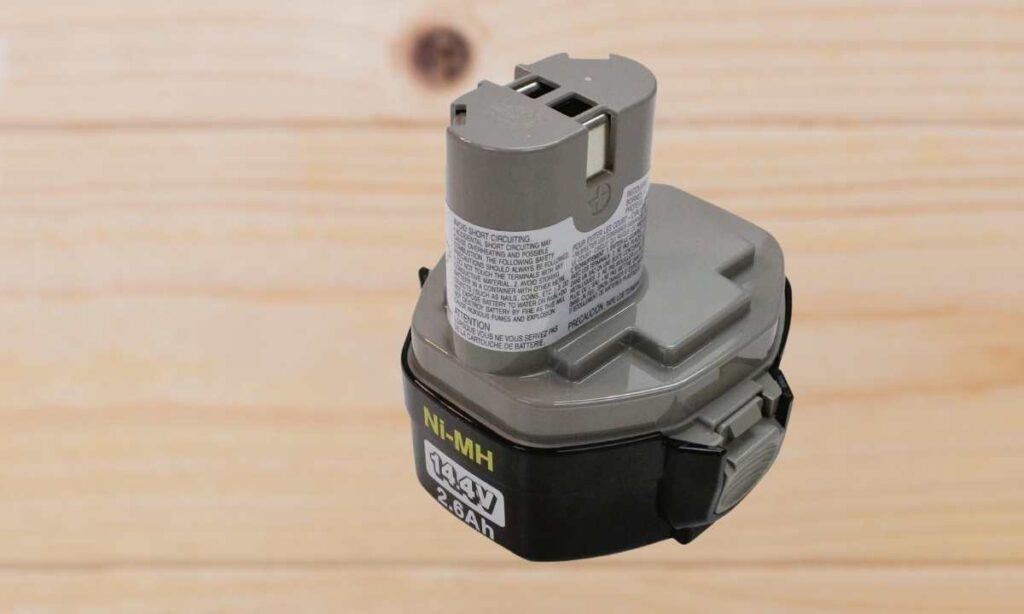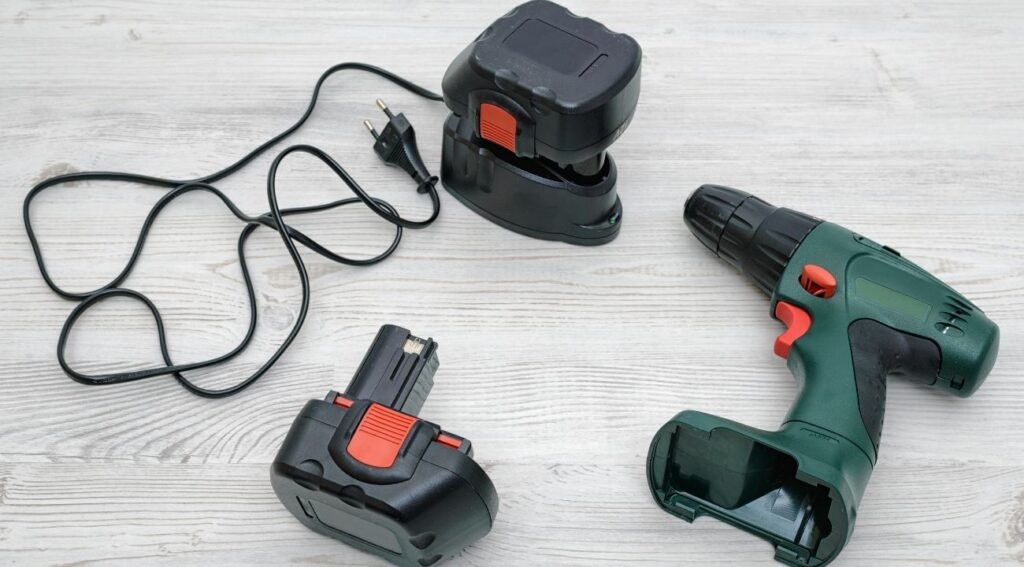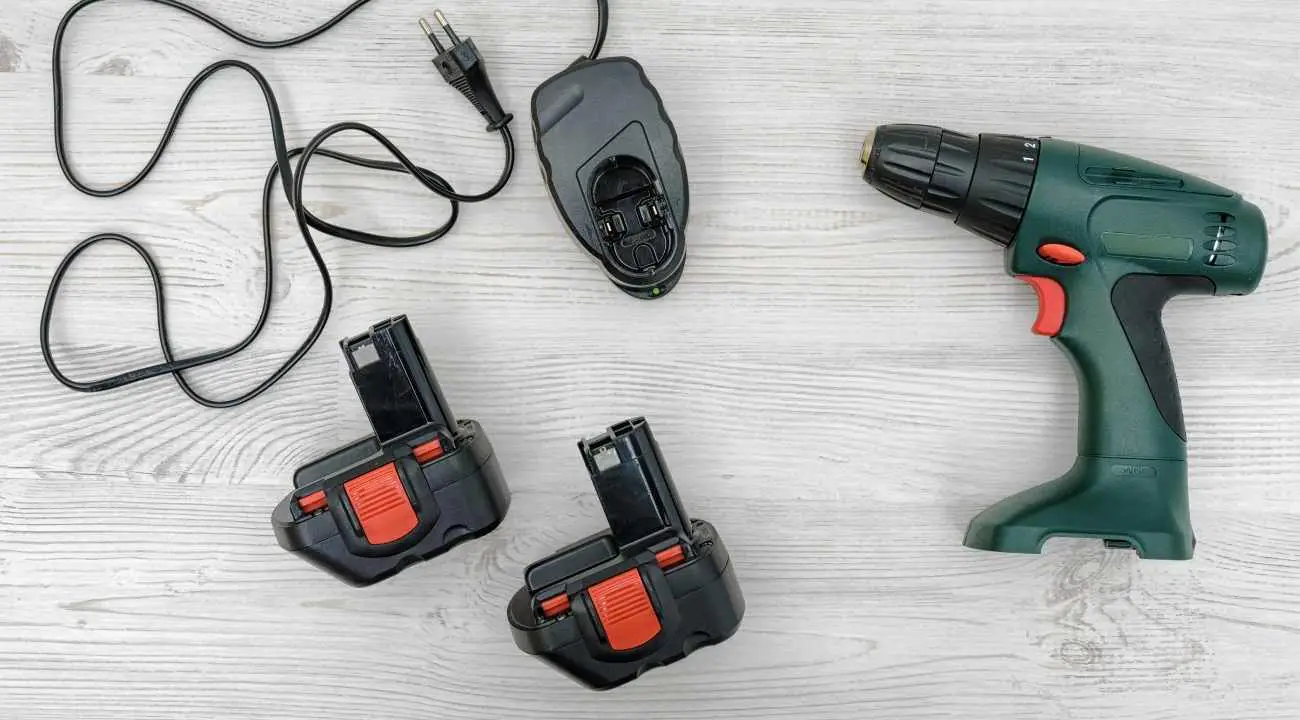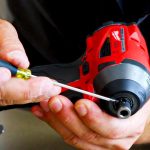Table of Contents
Nowadays, the demand for battery-powered power tools is skyrocketing because of how convenient they are to use. Most professionals prefer them as cordless power tools are better than corded ones. Cordless tools aren’t restricted by the cord length and do not depend on the availability of electricity. Although a battery adds more weight to your tool, it increases mobility and flexibility to your work too.
The most common question that might wander around your head is how long will the battery last on one charge. Well, it depends on its capacity. Different types of batteries vary in duration depending on their capability of storing power and manufacturing material. In this article, we’ll see how long a battery can run. In addition, we will also see the variation in batteries and how to make them last longer.
Types Of Cordless Drill Batteries
The battery is one of the most essential aspects that you should check out before buying a cordless power tool. Generally, there are two types of batteries available for a cordless drill. Let’s discuss them below.
Nickel-Cadmium Batteries (NiCD)
Nickel-cadmium batteries are the oldest type of batteries. Despite being old, it often delivers an unmatched level of performance under any challenging situation. These are more affordable options with a decent life cycle. NiCD batteries are tough and impact resistant in both high and low temperatures. They contain lower charging capacity and weigh more than Li-ion batteries. Here are some facts you should know about a NiCD battery:
- It comes with a thousand charging cycles.
- The self-discharging rate is 15-20%.
- Comes with a low charge storing capacity between 1200 mAh – 2200 mAh.
- It supports fast charging.
- It requires a full discharge once a month for proper maintenance.
- Performance may drop if you don’t maintain it properly.
- Highly durable.
- It’s able to perform well in challenging situations.

Lithium-ion Batteries (Li-ion)
Li-ion batteries are the blessing of modern technology and a better option than NiCD batteries. It’s more expensive, but the pricing justifies the performance. Li-ion batteries can last long enough to finish your project and only need somewhat regular maintenance to keep the battery performance stable. These types of batteries are lightweight and don’t feel heavy in the hand.
It has a few drawbacks, such as the battery being somewhat heat-sensitive, and you’ll sense the warmth in your hand after continuous work, but it still stands ahead of other types of batteries. But one thing to note is that the heat can deteriorate the inner components of a device, which often shortens the lifespan of the entire product. However, they have a shorter charging cycle and last relatively longer.
Here are some common facts you should know about a Li-ion battery:
- Can be charged 1300-1500 times
- More expensive than NiCD batteries
- An insignificant amount of self-discharging.
- Supports rapid charging
- It has 3000 mAh of charge storing capacity and more
- Requires minimum maintenance

Nickel-metal Hybrid Batteries
Apart from these two, there is another type of battery available on the market which we don’t see being used much. It’s called a nickel-metal hybrid battery. It’s like an upgraded version of the NiCD battery with a relatively better lifespan. NiMH batteries last longer than NiCD because of their higher energy density. Unlike the previous options, a NiMB battery is susceptible to heat and should always be kept between 33°F and 103°F. Here are some characteristics of NiMH batteries:
- Requires proper storage facility and maintenance
- Has a self-discharging rate of 20-30%
- 2200 mAh to 3000 mAh of charging capacity
- Fast charging enabled
- Requires full discharge once every three month
- Very sensitive to heat

How Long Does A Cordless Drill Battery Last?
To calculate the lifespan of a cordless drill battery, you need to look over various aspects. The lifespan mainly depends on the drill you are using and the quality of your battery. It also depends on how you use it and how you manage it. With average maintenance, you can get anywhere from 3 to 5 years of service before the battery life starts to degrade.
There are a few notable differences between a Li-ion battery and a NiCD battery. In terms of their storage medium, Li-ion batteries have less of an environmental impact. Because of better energy density, Li-ion batteries are far superior to NiCD batteries. Although they both release some charge in storage, NiCD batteries discharge 1%-3% every day, which is way more than Li-ion batteries. Again, over-charging hampers the battery’s charge-holding ability. Li-ion batteries are protected from overcharging and overheating, so they are expected to have a better lifespan.

How To Improve Your Battery Life
No matter what type of battery you are using, some common maintenance tips will help you better utilize your cordless drill battery. If you strictly follow the instructions mentioned below, you can easily make your battery last for a really long time.
Keep Your Battery Charged
You might have charged your battery before storing it each time after work and then started using it again when needed. However, this is not the correct method to maintain a cordless drill battery because, this way, there is a possibility of the battery getting damaged. When it’s stored, the battery loses some charge and the longer it stays idle, the more charge it loses.
You should not insert an idle battery directly into the drill machine before charging it as it suddenly puts a lot of pressure on the battery, which can be harmful. The experts always advise recharging the battery every time before starting work. You should not use batteries without a minimum of 70% charge. In addition, a NiCD battery should be discharged and recharged once a month, and a minimum of 20% charge should be maintained for the rest of the time.
On the other hand, Lithium-ion batteries should never be fully discharged. Instead, you should put a li-ion battery in charge as soon as it reaches below 10%. These tips can extend the battery life.

Charge The Battery Completely
Using low-powered batteries or half-drained batteries reduces their charge-storing capacity. That’s why NiCD batteries should be 100% charged before being used with cordless power tools. On the other hand, experts recommend that you should not fully charge lithium-ion batteries. Generally, they last longer if they are charged partially than when fully charged. There are many chargers available in the market with a charging level indicator. The indicator will help you to know the charging level.
Do Not Overcharge
Try not to overcharge your batteries or store them in a plugged charger overnight. Leaving it plugged in for too long can harm the battery. Read the instruction manual that comes with the charger before using them. Some chargers automatically stop charging once they reach 100%. So, if you don’t want to risk the integrity of your battery, then you should try to keep it safe from overcharging as much as possible.
Use Regularly
To keep your battery healthy, you need to use them regularly with your cordless drill. You might be charging your battery repeatedly but not using them, and thus it can depreciate the battery life. If you don’t need to use your drill regularly, try buying a corded drill as it runs directly from electricity, and you can store them without worrying about battery health.

Keep Backup Batteries
To be on the safe side, it’s a good idea to keep a spare battery for your cordless drill in case you run out of power in the middle of a project. Once your battery shows a low charge signal, you should immediately replace it with the extra battery. This way, you can ensure that you won’t completely drain the life of a single battery. In addition, having a backup will make your projects go more smoothly.
Final Verdict
With some simple precautions, you can get the most out of your batteries, which we estimate to be 3-5 years. And with proper care, your cordless drill battery can last more than a decade. To finish your projects quickly and efficiently, keep more than one battery in your toolbox. That way, you won’t have to stop what you are doing and deal with issues that could ruin your workflow.










Leave a Comment